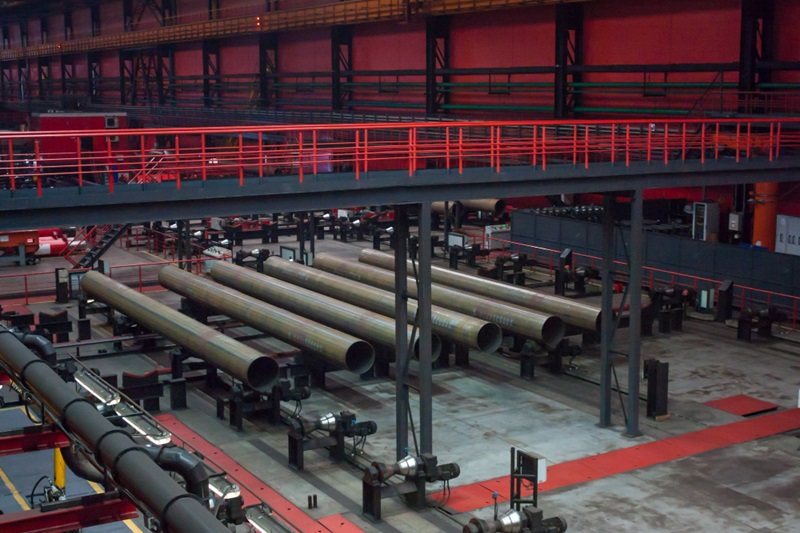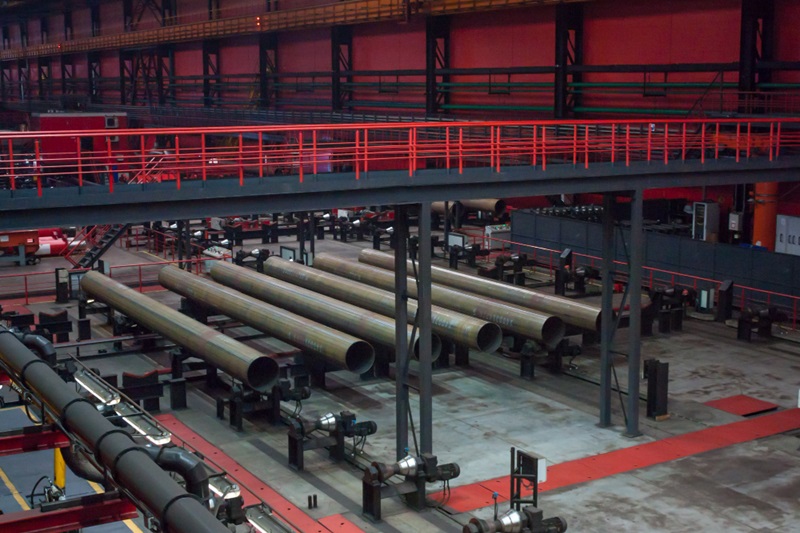 Industrial piping systems, vital across sectors like manufacturing and agriculture, ensure efficient fluid and gas transport, serving as foundational infrastructure. Selecting the right industrial piping company and materials for your project, especially in applications such as irrigation, demands a thorough understanding of various factors. This guide delves into essential tips for choosing the best piping solutions, transforming complexity into simplicity for your industrial needs.
Industrial piping systems, vital across sectors like manufacturing and agriculture, ensure efficient fluid and gas transport, serving as foundational infrastructure. Selecting the right industrial piping company and materials for your project, especially in applications such as irrigation, demands a thorough understanding of various factors. This guide delves into essential tips for choosing the best piping solutions, transforming complexity into simplicity for your industrial needs.
The Art of Selecting the Perfect Piping Material
The choice of piping material is crucial for the longevity and efficiency of your system. Here’s a breakdown of options and their implications:
Galvanized Pipes: Popular for their rust resistance, these pipes are treated with a protective zinc coating. However, they’re prone to corrosion over time, potentially causing blockages and safety hazards due to their higher friction factor.
Stainless Steel Pipes: Stainless Steel SS304L and SS316L are resistant to degradation and corrosion. However, their installation poses challenge due to their heavy weight, particularly when the pipes need to be mounted overhead, and their significant expense.
Aluminum and Copper Pipes: Both materials stand out for their corrosion resistance and lightweight nature, facilitating easy installation. They ensure a clean, debris-free delivery of compressed air but come at a higher cost with minimal maintenance needs.
Plastic Pipes: While affordable and resistant to corrosion, PVC pipes pose significant risks in compressed air applications, including the potential for explosive failure.
Revolutionizing Marketing Strategies with PPCH Technology
PPCH technology stands at the forefront of advancements in pneumatic piping and fittings, presenting a superior alternative for diverse compressed air applications traditionally served by metal (including GI, MS, CI, SS), plastic, and aluminum pipes. This technology excels in energy efficiency, boasting the lowest RA values and superior flow coefficients unmatched in its class. Its design ensures resistance to ultraviolet light and boasts flame-retardant properties, ensuring a safe and durable piping solution.
The system is engineered to be completely leak-proof and corrosion-resistant, guaranteeing longevity and reliability. Additionally, it offers an enhanced flow rate for pipes of identical diameter compared to its counterparts, significantly reducing the likelihood of moisture accumulation within the system due to its innovative approach to minimizing internal condensation.
Navigating Piping Size with Precision
Ensuring optimal airflow and maintaining the necessary operating pressure are paramount in compressed air systems. The dimensions of the piping play a critical role in this balance. When pipes for irrigation are too narrow, the air’s journey becomes lengthier, and it encounters increased resistance, slowing its pace and causing a notable decline in pressure. This inefficiency can lead to elevated energy consumption as the system compensates for lost pressure, inflating the operational costs of air compressors.
Conversely, opting for broader pipelines might seem like a solution, but it entails higher installation costs due to the increased amount of materials needed. Although large-diameter pipes can hold a greater volume of air, relying on them for air storage is not the most economical strategy. Investing in additional or more substantial air receiver tanks presents a more cost-effective approach to managing air reserves.
Crafting an Efficient Piping Layout
Crafting a compressed air system’s layout brings its own challenges, including navigating sharp turns, avoiding blockages, and controlling moisture. Minimizing sharp bends in the system is crucial as they can severely restrict airflow and reduce pressure. Opting for gentle curves with angles between 30 to 45 degrees can enhance air movement and minimize pressure losses.
Moisture generation is another inevitable aspect of compressing air, driven by the humidity present in ambient air. Once compressed, this moisture condenses, posing a risk of corrosion to certain piping materials. This process can lead to the breakdown of the pipe’s interior, releasing rust particles that can obstruct the system and lower pressure. Air dryers and cooling units reduce moisture, preventing corrosion and improving airflow quality in industrial piping systems.
Ultimately, the goal is to maintain a consistent and efficient air pressure throughout the system. By carefully selecting the appropriate pipe size and designing a layout that minimizes resistance and moisture-related issues, one can achieve a compressed air system that operates effectively without unnecessary energy expenditure or risk of corrosion and blockages.
Implementing Drip Legs for Moisture Management
Incorporating drip legs into your industrial piping system is smart for managing moisture effectively. These attachments act as a release point for water vapor condensed by air compressors, preventing damage to your machinery. Regular drainage or the addition of an automatic drain is crucial for their effectiveness. Even with a dryer in place, a drip leg is advisable as a backup solution, ensuring continuous operation without hiccups.
Enhancing System Integrity with Ball Valves and Unions
System integrity often faces threats from unexpected damages or component failures. Installing ball valves provides a strategic point of isolation, enabling swift responses to any issues without affecting the entire setup. Positioning these valves strategically before or after significant components ensures minimal downtime during maintenance or repairs. Furthermore, incorporating unions into your design allows for quick component replacement, significantly reducing labor hours and enhancing the installation efficiency of pipes for irrigation or other industrial applications.
Choosing the right industrial piping company for your needs involves more than just selecting high-quality pipes for irrigation; it’s about ensuring each component of your system works in harmony. Ball valves and unions uphold system integrity, easing maintenance, and fortifying your industrial piping setup for optimal performance.
Setting up an effective compressed air piping system doesn’t require extensive technical expertise; rather, it calls for thoughtful planning and collaboration with a trusted industrial piping company. Securing high-quality materials and equipment from reliable sources is just the beginning. Adhering to safety standards ensures longevity and security, making your industrial piping system a cost-efficient operational solution.
Future of Industrial Piping Solutions
Ready to elevate your piping solutions to the next level with the best industrial piping company? International Pipe is your premier destination for top-quality pipes. Our team of experts is dedicated to providing customized pipes, ensuring you find the perfect solutions tailored to your specific needs. Contact us today to discover why we’re the preferred choice for industry-leading pipe supplies.

